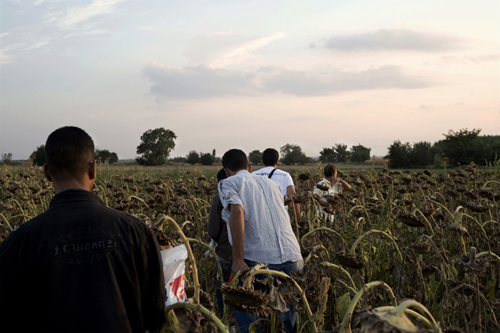Mathias DEPARDON
This post is also available in:
 Anglais
Anglais
La frontière gréco turque est devenue le principal point d’entrée des migrants dans l’Union européenne. Selon Frontex 75% des clandestins passent aujourd’hui par cette frontière, la plus perméable et la plus ouverte. Le passage vers l’Espagne ou l’Italie s’est refermé. La Turquie est à la porte de l’Union européenne et engagée dans des négociations d’adhésion qui incluent un alignement des politiques migratoires. En face, la Grèce, membre malade de l’UE, plongée en pleine crise économique, voit débarquer chaque jour des voyageurs venus d’Afrique, du Moyen Orient, d’Afghanistan ou d’Asie centrale, en route pour l’Europe. Athènes est submergée et doit supporter quasiment seule le poids de la politique européenne. La Grèce compterait plus d’un million de sans papiers pour une population de 12 millions d’habitants. 100.000 à 150.000 clandestins entrent en Grèce chaque année. Ces dernières années, beaucoup traversaient la mer Egée, sur des barques ou des zodiacs, vers les îles grecques situées près des côtes turques. Des dizaines ont péri noyés. Aujourd’hui, les passeurs qui rabattent les migrants à Istanbul traversent la frontière terrestre. Une fois de l’autre côté, les migrants sont souvent cueillis par la police et emmenés au centre de rétention d’Evros. Après quelques jours, ils sont invités à quitter le territoire dans les 30 jours, un billet pour Athènes en poche. Les premiers jours sont durs. La déception est immense. Pour les clandestins le voyage est loin d’être terminé. La Grèce a tout du cul de sac. Pour continuer, il faut rejoindre Patras, le port de l’Ouest, fenêtre sur l’Italie, ou bien s’embarquer dans un camion qui part vers la Hongrie, via la Serbie et la Macédoine. Ou encore, monnayer un visa dans l’une ou l’autre des ambassades européennes, un commerce lucratif. La corruption touche toutes les administrations. A PAtraas, Des milliers de migrants erraient autour des grilles de la zone portuaire, pour tenter de sauter dans un camion et des policiers avaient été reconnus coupables de trafic d’êtres humains. Le camp n’existe plus mais une « jungle » s’est reformée un peu plus loin. Et les voyageurs sont toujours là. Des ferrys qui arrivent d’Italie débarquent des refoulés. D’autres migrants embarqueront dans l’autre sens. Patras est l’impasse la plus visible de la politique migratoire européenne.
The Turkish border with Greece became the main point of entrance for migrants into the European Community . According to Frontex, 75% of migrants enter Europe through this border which happens to be the most accessible one. Turkey is now at the gate of Europe engaged in negotiations with the EU which will determine its immigration policy. On the other side, Greece, the sick member of the EU, is in a deep economical crisis and sees hundreds of newcomers from Africa, the Middle East, Afghanistan and Central Asia on their way to Europe arriving on a daily basis. Istanbul, a city with 15 million inhabitants at the edge of Europe and Asia is the gathering point of most migration in Europe. At the heart of the old town, Kumkapi, an old Armenian neighborhood is a mosaic of origins: Afghani, Pakistanis, Algerians, Soudanis, Somalians and Nigerians fills up the small hotels and the internet café’s. Migrants live in this small neighborhoods doing small jobs and deals to help them continue the journey through Europe. Between 100,000 and 150, 000 newcomers arrive in Greece every year. In the last couple of years many of them cross the Aegean Sea on small boats to reach the Greek islands such as Samos, Lesbos and Kos. Dozens of them have died in the water during long and exausting nights in the middle of the sea in over packed boats with poor equipments (no GPS, life jackets…) Today the smugglers fold back in Kumkapi to find newcomers and cross the border in the Evros region in the north of Greece, just two hours from Istanbul. Evros is an easier place to cross, it’s safer and cheaper for migrants to reach Europe from there now. It’s the new route! I personally crossed the border with some refugees last month in the process of shooting this story. When they arrive on the other side, after spending all night walking through the sunflower fields, along the Evros river and finally reaching the railroad station in the first village, most of them get picked up by the authorities and sent to a detention center along the border. In the camp they are then questioned, finger printed and registered into the European system (Dublin II). Later on, if they are arrested in any other countrie that happen to be part of the Schengen territory, they will be deported to Greece. Many of the migrants I met in my trip in Greece had spend several years in either France, the UK, Belgium Italy, Ireland, or Austria before being arrested and deported to Greece. After a few days, they are released from this detention center and receive a document that allows them to be in the country for 30 days. When they exit the camp they have to reach Athens which happens to be 1200 km from the Turkish border. Most of them travel by bus and reach the Greek capital where they will be able to meet up with their own communities and network. In Athens, the first couple of days are tough. First, the deception….is this Europe? It sure does not look like it for those who had something more Western in mind, something more clean and welcoming. Migrants are all over the capital. The Afgani in Attiki Park, the Sudanese and Somali in Victoria, the Algerians in Omonia,… Athens sometimes looks like a urban camp for refugees. Plus, there are almost no associations or NGO’s helping out. Greece is like a dead end. Most of them stay in squats on the outskirts of Athens, if not on the street or by the parks. To continue the journey through Europe, they have to reach Patras, a harbour on the West coast of Greece which can turn out to be a window towards Italy. In Patras the living conditions are extremely difficult for most sleeps in the streets and parks near the harbour. On a daily basis they try to enter the harbour fence and then jump in a ferry going to Italy, on a truck under the axle or inside when they are waiting at the traffic light to enter the city. In 2009 Patras had a shantytown very similar to the “jungle” of Calais, France, except it was in the heart of the city. Last year the local authorities decided to shut it down. The camp does not exist anymore, but thoussands of its inhabitants are still here, some of them since 2 years ago, in the hope of reaching Italy. When the migrants are caught on the harbour by the Greek military, they don’t escape without a serious beating. Everyday dozens of boys are being seriously beat up by what they call the “commandos”. On a daily basis you see ferries coming from Italy to Patras disembarking migrants who get caught after spending 48hours in the ferry lying under a truck, without food or water. Patras is the dead end of the European migration policy. In Istanbul and along the Turkish border with Greece, in Samos (where the detention center for migrants happens to be empty lately), in Athens and in Patras I have recorded statements and taken photographs of migrants in what happens to be the most frequented road now towards Western Europe. In six weeks, I have captured moments of life throughout the migrants’ journey, encountering unique people with unique experiences that express the living conditions of migrants entering Europe.
The Turkish border with Greece became the main point of entrance for migrants into the European Community . According to Frontex, 75% of migrants enter Europe through this border which happens to be the most accessible one. Turkey is now at the gate of Europe engaged in negotiations with the EU which will determine its immigration policy. On the other side, Greece, the sick member of the EU, is in a deep economical crisis and sees hundreds of newcomers from Africa, the Middle East, Afghanistan and Central Asia on their way to Europe arriving on a daily basis. Istanbul, a city with 15 million inhabitants at the edge of Europe and Asia is the gathering point of most migration in Europe. At the heart of the old town, Kumkapi, an old Armenian neighborhood is a mosaic of origins: Afghani, Pakistanis, Algerians, Soudanis, Somalians and Nigerians fills up the small hotels and the internet café’s. Migrants live in this small neighborhoods doing small jobs and deals to help them continue the journey through Europe. Between 100,000 and 150, 000 newcomers arrive in Greece every year. In the last couple of years many of them cross the Aegean Sea on small boats to reach the Greek islands such as Samos, Lesbos and Kos. Dozens of them have died in the water during long and exausting nights in the middle of the sea in over packed boats with poor equipments (no GPS, life jackets…) Today the smugglers fold back in Kumkapi to find newcomers and cross the border in the Evros region in the north of Greece, just two hours from Istanbul. Evros is an easier place to cross, it’s safer and cheaper for migrants to reach Europe from there now. It’s the new route! I personally crossed the border with some refugees last month in the process of shooting this story. When they arrive on the other side, after spending all night walking through the sunflower fields, along the Evros river and finally reaching the railroad station in the first village, most of them get picked up by the authorities and sent to a detention center along the border. In the camp they are then questioned, finger printed and registered into the European system (Dublin II). Later on, if they are arrested in any other countrie that happen to be part of the Schengen territory, they will be deported to Greece. Many of the migrants I met in my trip in Greece had spend several years in either France, the UK, Belgium Italy, Ireland, or Austria before being arrested and deported to Greece. After a few days, they are released from this detention center and receive a document that allows them to be in the country for 30 days. When they exit the camp they have to reach Athens which happens to be 1200 km from the Turkish border. Most of them travel by bus and reach the Greek capital where they will be able to meet up with their own communities and network. In Athens, the first couple of days are tough. First, the deception….is this Europe? It sure does not look like it for those who had something more Western in mind, something more clean and welcoming. Migrants are all over the capital. The Afgani in Attiki Park, the Sudanese and Somali in Victoria, the Algerians in Omonia,… Athens sometimes looks like a urban camp for refugees. Plus, there are almost no associations or NGO’s helping out. Greece is like a dead end. Most of them stay in squats on the outskirts of Athens, if not on the street or by the parks. To continue the journey through Europe, they have to reach Patras, a harbour on the West coast of Greece which can turn out to be a window towards Italy. In Patras the living conditions are extremely difficult for most sleeps in the streets and parks near the harbour. On a daily basis they try to enter the harbour fence and then jump in a ferry going to Italy, on a truck under the axle or inside when they are waiting at the traffic light to enter the city. In 2009 Patras had a shantytown very similar to the “jungle” of Calais, France, except it was in the heart of the city. Last year the local authorities decided to shut it down. The camp does not exist anymore, but thoussands of its inhabitants are still here, some of them since 2 years ago, in the hope of reaching Italy. When the migrants are caught on the harbour by the Greek military, they don’t escape without a serious beating. Everyday dozens of boys are being seriously beat up by what they call the “commandos”. On a daily basis you see ferries coming from Italy to Patras disembarking migrants who get caught after spending 48hours in the ferry lying under a truck, without food or water. Patras is the dead end of the European migration policy. In Istanbul and along the Turkish border with Greece, in Samos (where the detention center for migrants happens to be empty lately), in Athens and in Patras I have recorded statements and taken photographs of migrants in what happens to be the most frequented road now towards Western Europe. In six weeks, I have captured moments of life throughout the migrants’ journey, encountering unique people with unique experiences that express the living conditions of migrants entering Europe.
NEWSLETTER
Pour recevoir nos informations, inscrivez votre adresse email.EN SAVOIR PLUS

Pour Que l’Esprit Vive,
Association loi 1901 reconnue d’utilité publique
Siège social
20 rue Lalande,
75014 Paris – France


